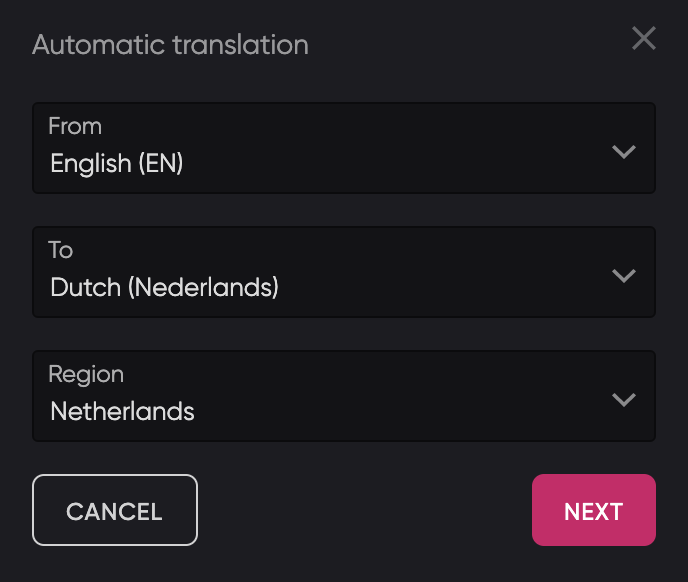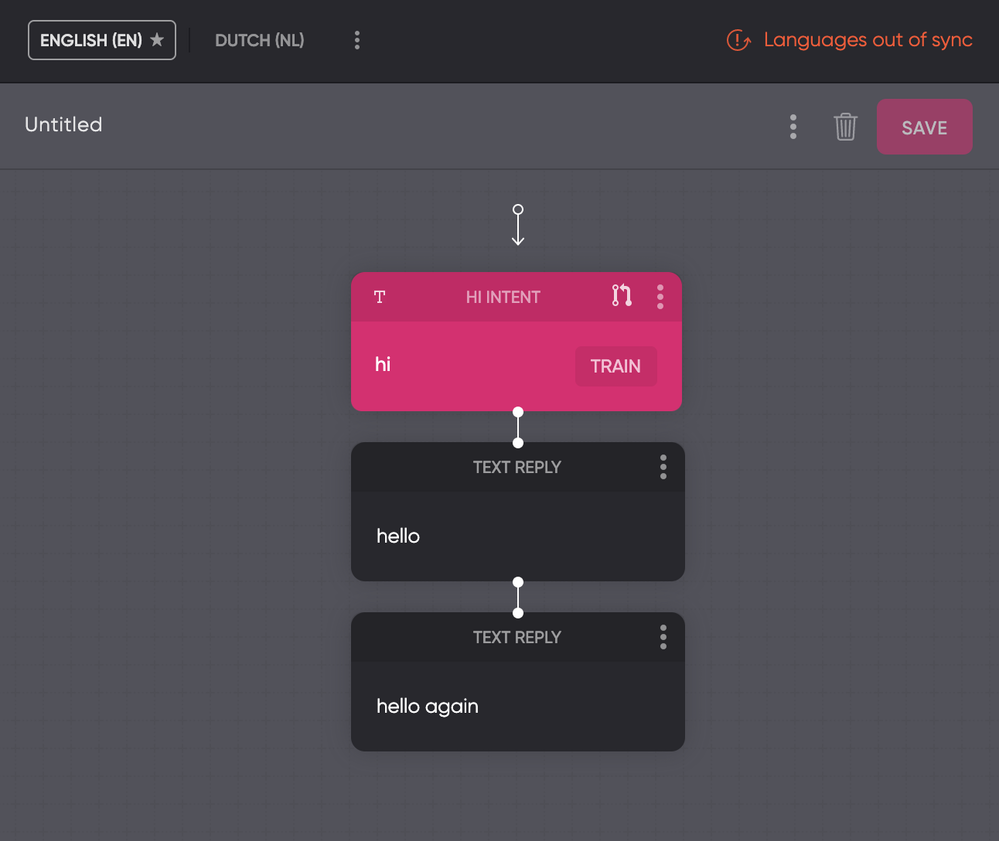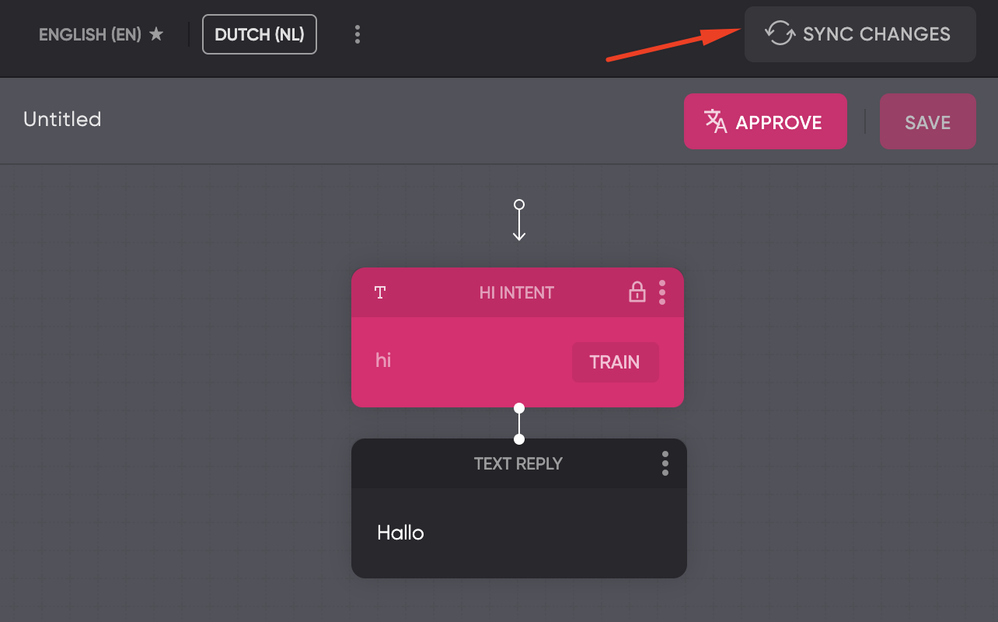Flow Advanced: Multi-language design
With the help of Multi-language design, you can create a single project that supports multiple languages and regions without having to duplicate flows, intents, or entities. It provides a workflow that greatly reduces time and complexity for maintaining multi-language projects.
Note: Use Multi-language design if you create a bot that has the same flows for multiple languages.
At any time, you can add and synchronize additional languages to a flow based on a primary language. By default, the system machine-translates content when synchronizing changes between languages.
How to enable
You can enable the multi-language feature by adding additional languages. Go to the Languages overview inside the Project settings screen.
Choose Add new language and then select a Translate option.

Note: Multi-language design requires all languages to use the "multiple languages" model.
With Multi-language design, one language is always the primary language. You will only be able to change triggers and flows inside this language. All secondary languages can only be translated.
For translation, you need to choose a language and a region. This enables you to differentiate a language for multiple regions.
Workflow
After translation has completed, you can review the secondary languages and approve or adjust changes in replies and training examples.
Let's look at an example of this workflow:
- When you make changes to flows inside the primary language, you will see an indication your primary language is out of sync with a secondary language.

Note: You can only make changes inside the primary language. Secondary languages are read-only, except for replies, entities, and intent examples.
- When you've completed your work, you can choose any secondary language and synchronize your changes.

Pink dots indicate that flows and intents were added and translated, but not approved yet.

- Approve all synchronized changes. After you've approved all changes, you'll see the indication all languages are back in sync.
Additional information
- Machine-translation is applied if possible.
- You can assign channels to specific languages, regions or a combination of the two.
- Depending on the channel, we'll try to detect the language of a user and route the them to the correct language.
- You can only change flows inside the primary language.
- You can add additional training data or tweak replies for secondary languages.
- In edge cases you can use a condition to differentiate a certain flow.
Updated about 2 years ago